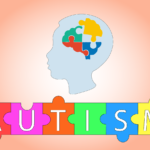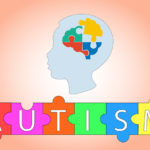In order to understand Dravet syndrome, you first need to understand what causes it. In addition, you should also know when the symptoms of the disorder begin. This article will also discuss treatment options for this disease. Listed below are some of the main symptoms of the syndrome.
What Is Dravet Syndrome
Recent research on DRAVET syndrome supports a link between autism and epilepsy. This rare seizure disorder is characterized by prolonged seizures and is often associated with developmental delays. Children with this condition may also experience sleep problems and movement problems. The first sign of the disorder is usually a prolonged seizure, which may be accompanied by behavioral changes. The seizures may last as long as five minutes and may occur on either side of the body. These seizures usually occur every few weeks in infancy and early childhood. They may also be triggered by flashing lights, patterns, or physical exertion.
The symptoms of Dravet syndrome vary greatly from child to child and can be mild or severe. These seizures are difficult to control and are often persistent. Children with this syndrome will require lifelong care, including the use of special devices and medical equipment.
What Triggers Dravet Syndrome?
Children who have Dravet syndrome often experience seizures. These seizures can be febrile, in which convulsions occur throughout the entire body, or hemiclonic, in which seizures occur only on one side of the body. These seizures are usually triggered by a change in body temperature.
Seizures are the hallmark symptom of Dravet syndrome, but other symptoms include learning difficulties and behavioral problems. These problems often last a child’s entire life. Moreover, children with Dravet syndrome usually show signs of autism at around three and a half years of age. They may also become unsteady on their feet and walk with an irregular gait. Children with the disorder need constant care throughout their lives.
A genetic mutation in the SCN1A gene causes Dravet syndrome. This mutation affects gamma-aminobutyric acid-ergic neurons, which function as the central nervous system’s primary inhibitory neurotransmitter. Dravet syndrome is a lifelong condition and has no cure.
When Do Symptoms Of This Disease Begin?
The first signs of Dravet syndrome include seizures. A child may have febrile seizures (seizures that affect the whole body) or hemiclonic seizures (jerking movements on one side of the body). Seizures in children with this syndrome can be triggered by slight temperature changes.
The symptoms of Dravet syndrome typically start around age two or three. At this age, children may begin to lose developmental progress or stop acquiring new skills. Fortunately, the condition often stabilizes by age six. However, it is important to recognize the symptoms as early as possible, as early intervention and therapies can help your child. Genetic testing may be recommended to identify the gene responsible for the disorder. About 80 percent of people with the syndrome carry a mutation in the SCN1A gene.
Children with Dravet syndrome usually have normal development for the first few years of life, but their development will slow down significantly after the age of three. As a result, they will likely be a year or two behind their peers. Additionally, children with the disorder may begin to walk with a crouched gait and exhibit other signs of developmental disabilities.
Treatments For Dravet Syndrome
The symptoms of Dravet syndrome vary from child to child and typically start during the first year of life. They usually involve one side of the body and are characterized by jerking and stiffness. These seizures are much more prolonged than typical febrile seizures, and may last from 15 minutes to several hours. Children with this condition often need ongoing medical care and assistance throughout their lives.
Treatments for Dravet syndrome focus on controlling seizures to prevent the child from developing SUDEP or status epilepticus, which can be fatal. Treatments can include medications, diet modifications, and alternative approaches like natural compounds from cannabis fast flowering strains . Generally, children with Dravet syndrome require 24-hour care.
Dravet Syndrome Genetics
Dravet syndrome genetics have bolstered the autism-epilepsy link by identifying new mutations in the Dravet gene. This new finding will be helpful in the diagnosis of this rare epilepsy condition. It will help to confirm the parental diagnosis and determine the risk of recurrence during subsequent pregnancies. Genetic testing will also help physicians understand the patient’s physical, occupational, and speech therapy needs. In addition, cardiac and ophthalmological issues will be assessed.
The first symptom of Dravet syndrome is a long-lasting seizure. The seizures usually occur in conjunction with a high fever. Children with the syndrome also exhibit developmental setbacks including difficulty walking, speech, and balance. Previously, the condition was known as polymorphic epilepsy in infancy.
Related Posts












